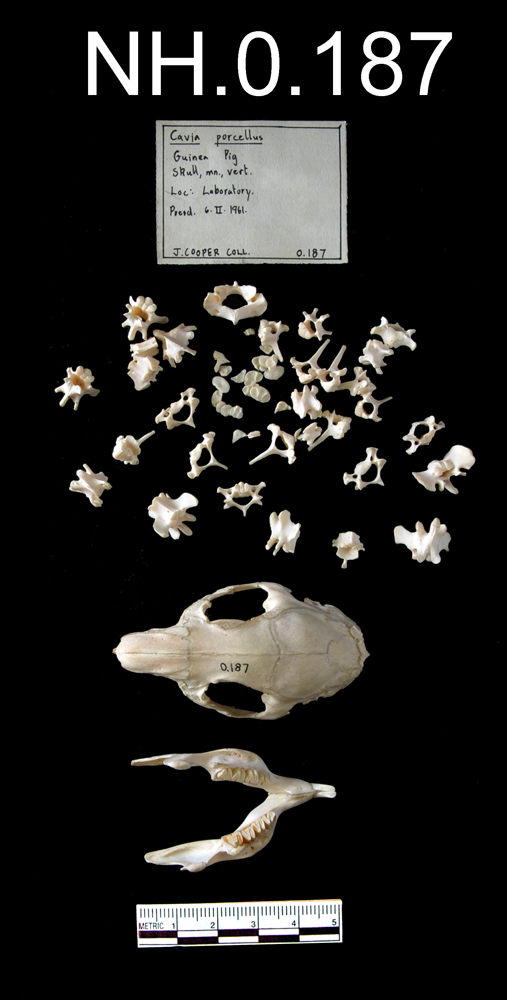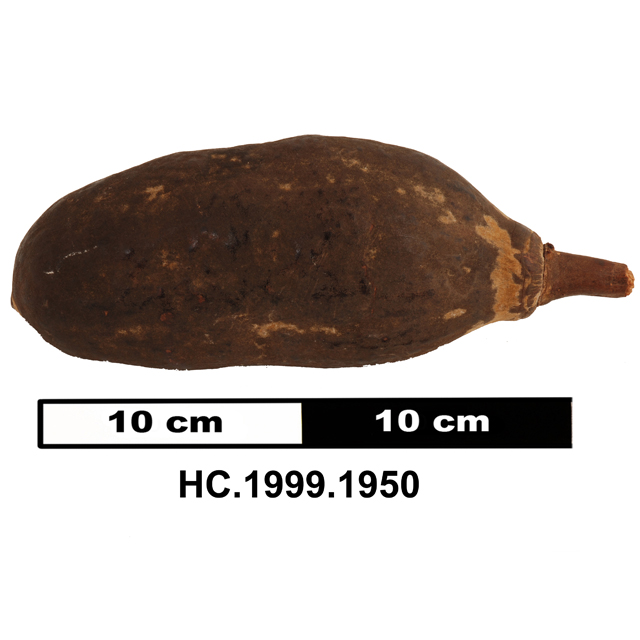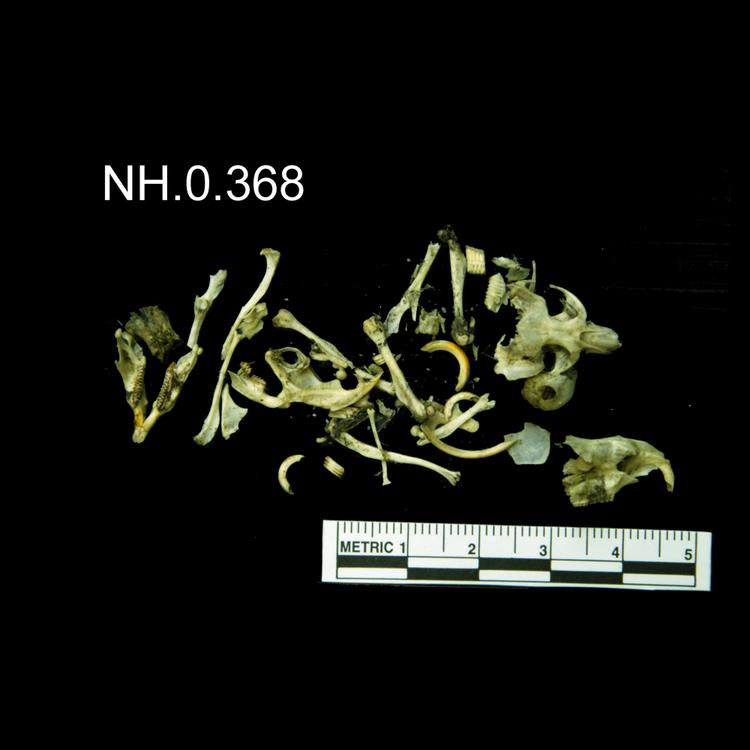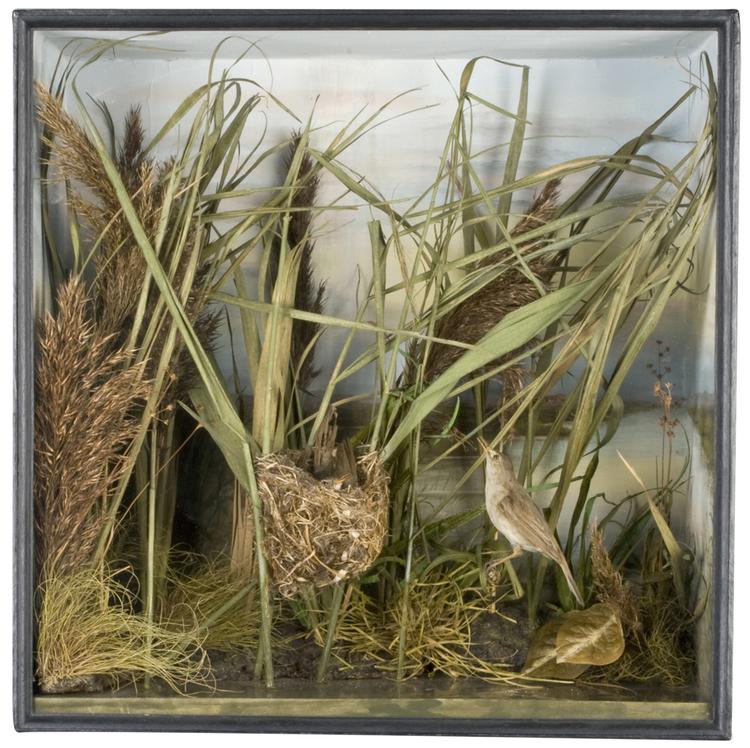
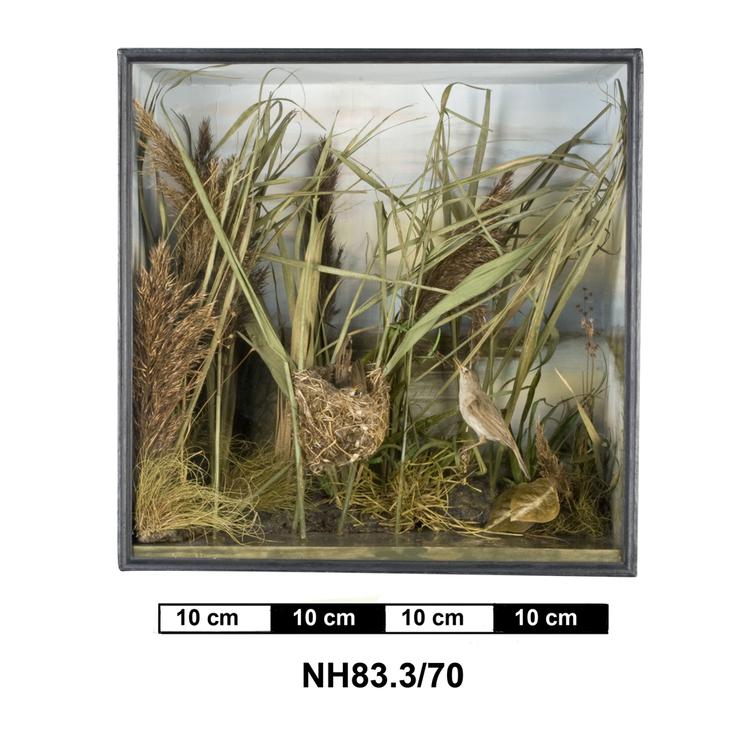
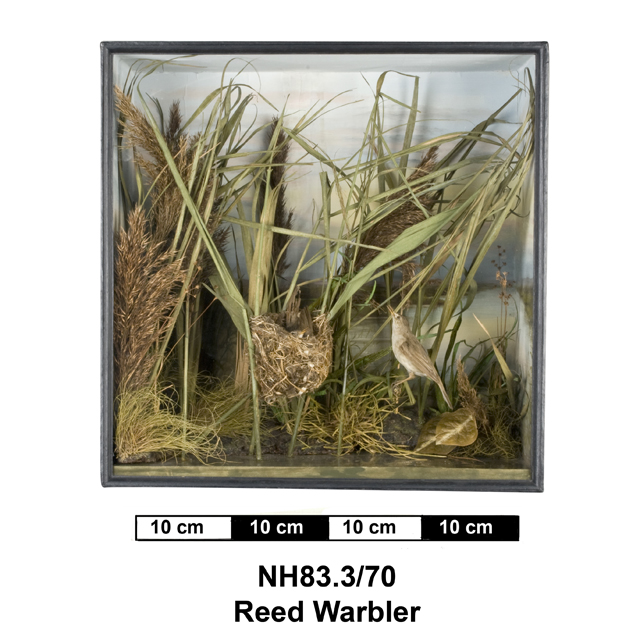
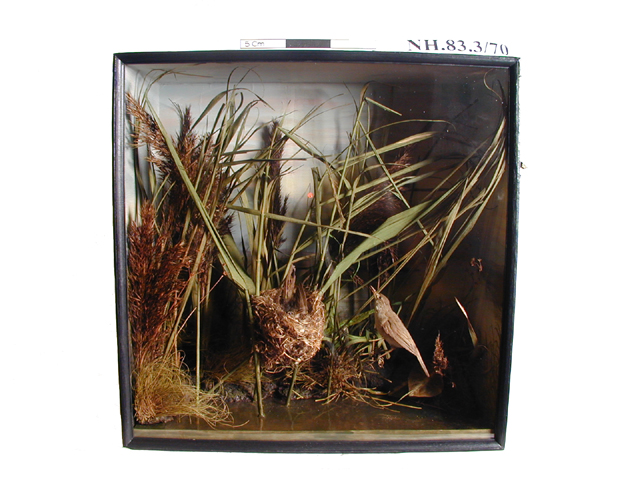
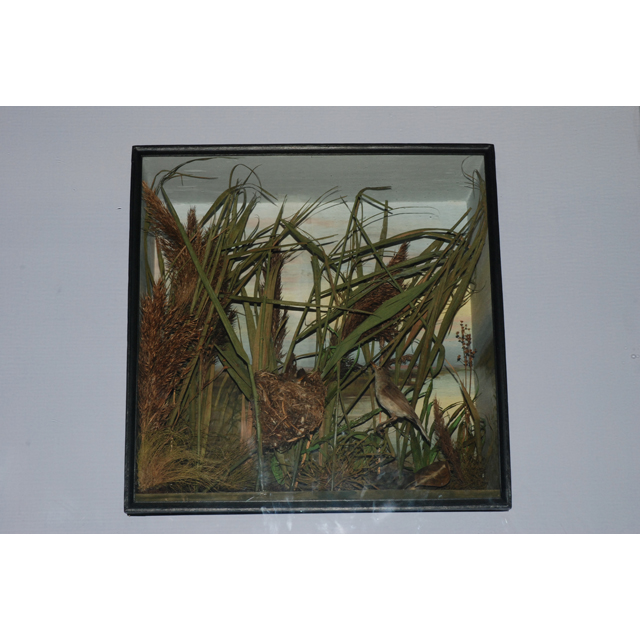
Taxidermy case of adult male and adult female Eurasian Reed-warbler by Edward Hart.
Taxidermy case of adult male and adult female Eurasian Reed-warbler. According to Edward Hart, writing on 6 April 1927, 'Middle (no 1): adult female, July 21st 1887; bottom right (no 2): adult male, 9th July 1885; nest: 1887. Shot by me on Smuggler's Island, Christchurch. In a nest of this species a Cuckoo had placed her egg, which the owner refused to incubate. The nest being too deep for them to expel it, the owners placed a new lining in the nest, covering over the objectionable egg, and afterwards laid a fresh set and reared children, knowing that the heat from the body would not influence the egg below. An indication that their ways are governed, not only by instinct, but by a process of reasoning akin to that of man. Sexes alike. summer resident only. Mounted by me'. 'The Reed-warbler is to be met with by the banks of rivers and ponds, or wherever reeds abound - at the least disturbance are remarkably noisy, scolding incessantly all the time you linger near. As the sun commences to set this bird breaks out into continous singing, throughout the greater part of the night. The song of these birds, so absolutely alone, serves merely as an accent to that silence of the night. From an hour before and after mid-night, however, these birds are silent, the only sound to be heard then is the occasional croak of a Heron or Moorhen, or a splash of a fish in the water to break the monotony of the sighing of the reed-beds, the sound of the delicate, almost imperceptible waving of the reeds as the tide ebbs or flows, causing a faint confusion of sounds.'



